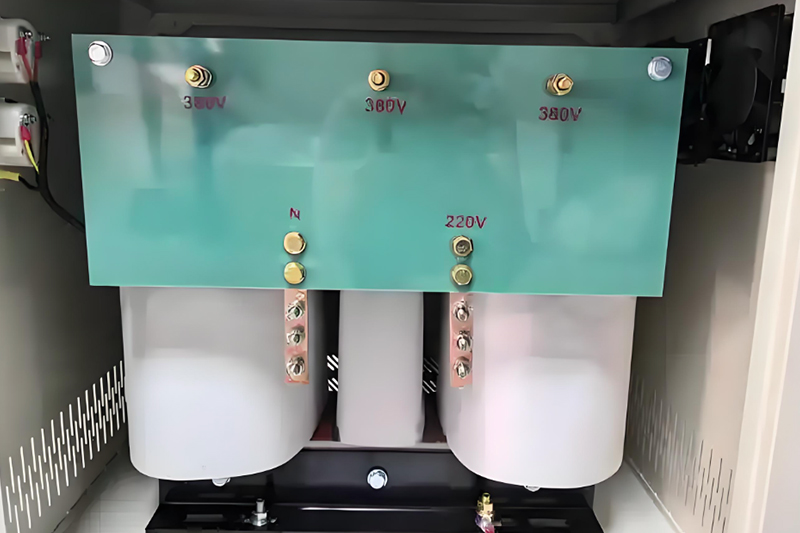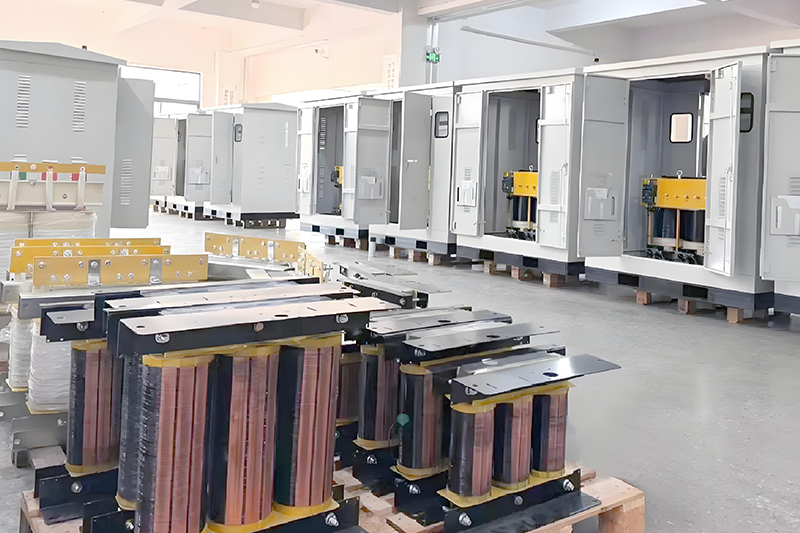Isolation Transformers in Industrial Automation: Applications and Key Roles
In modern industrial automation, isolation transformers play a vital and irreplaceable role. Their core function is electrical isolation, but they also serve multiple purposes including voltage conversion, electromagnetic interference suppression, and system safety enhancement. As a result, they are essential to maintaining the reliability and stability of automation systems.

Working Principle of Isolation Transformers
Isolation transformers operate on the principle of electromagnetic induction, transferring energy via magnetic coupling between the primary and secondary windings. Importantly, there is no direct electrical connection between the input (primary) and output (secondary), enabling complete galvanic isolation. Key design elements include:
Dual winding construction: Physically separated windings ensure effective electrical isolation.
Optional shielding layer: Reduces high-frequency noise coupling and enhances electromagnetic interference (EMI) resistance.
Key Application Scenarios in Industrial Automation
1. Control Systems
In systems like PLCs (Programmable Logic Controllers) and DCS (Distributed Control Systems), isolation transformers decouple the control power supply from the main grid. This prevents power grid harmonics, voltage spikes, and surges from affecting control precision, ensuring uninterrupted and stable system performance.
2. Drive Systems
For VFDs (Variable Frequency Drives), inverters, and servo drives, isolation transformers separate the motor side from the grid. They suppress EMI generated by motors and protect drives from power quality disturbances, such as sags and transients.
3. Sensors and Actuators
In sensor and actuator networks, isolation transformers supply clean and stable power, eliminating ground potential fluctuations and EMI. This prevents errors in measurement and response that could jeopardize automation processes.
4. Industrial Communication Networks
Within industrial Ethernet or fieldbus networks, isolation transformers isolate different devices electrically, breaking ground loops and blocking EMI. This significantly enhances the reliability and accuracy of data communication.

Core Benefits of Isolation Transformers in Automation
1. Electrical Isolation and Personnel Safety
Shock prevention: Isolation transformers prevent shock hazards by decoupling the secondary-side equipment (e.g., PLC cabinets) from the grid—even in wet environments.
Ground loop current suppression: They eliminate current caused by ground potential differences, protecting sensitive devices like sensors and servo amplifiers from malfunction or damage.
2. EMI Suppression and Noise Reduction
Blocking common-mode noise: Isolation layers shield systems from high-frequency disturbances caused by VFDs or radio frequency sources, improving analog signal stability.
Harmonic mitigation: Isolation transformers attenuate power grid harmonics, especially in systems with nonlinear loads like motor drives.
3. Voltage Conversion and Adaptation
Voltage level matching: Transform 380V industrial supply to 220V or 110V for control units, or down to 24V for auxiliary safety circuits.
Phase conversion: Supply single-phase power from a three-phase source to run industrial PCs or lighting circuits.
4. Equipment Protection and System Reliability
Surge isolation: During lightning strikes or switching operations, isolation transformers prevent transient voltages from reaching critical control equipment.
Fault containment: They help localize faults like short circuits and prevent them from cascading across the entire automation system.
How to Choose the Right Isolation Transformer
When selecting an isolation transformer for industrial use, consider the following parameters:
Power rating: Choose a unit rated 1.2–1.5 times the total system load. For example, for a 7kW load, a 10kVA transformer is recommended.
Insulation class: For damp environments, select H-class insulation (up to 180°C) for long-term reliability.
Shielding: For high-EMI environments, use copper foil shielded transformers to enhance performance.
Input/output voltage: Confirm voltage conversion needs (e.g., 380V to 220V, or 220V to 110V).
Compliance: Ensure compliance with IEC/EN 61558 or UL 506 for safety and performance standards.
Usage Precautions
Regular maintenance: Check insulation resistance and monitor winding temperature to ensure optimal performance.
Avoid overload: Continuous overloading accelerates insulation degradation and reduces transformer lifespan.
Proper grounding: Use single-point grounding on the secondary side to prevent circulating current and maintain system stability.
Isolation transformers are essential in modern industrial automation for ensuring electrical safety, enhancing power quality, and improving overall system reliability. By carefully selecting the right transformer and maintaining proper usage practices, enterprises can significantly improve the operational stability of their automated systems.
- more+releated article
- 2025-10-21Application of K Factor Transformer
- 2025-10-21Detailed explanation about transformer model w
- 2025-10-2010kV Oil-Immersed Transformer Safety: Lightnin
- 2025-10-20What are The Advantages of Phenolic Cotton Clo
- 2025-10-17Are Three-Phase Isolation Dry-Type Transformer
- 2025-10-17G10 Epoxy Sheet: Choosing the Right Specificat
- 2025-10-1610kV Oil-Immersed Transformer Operation Inspec
- 2025-10-163240-B Epoxy Phenolic Glass Fiber Cloth Lamina
- 2025-10-15G10 Epoxy Sheet: The Preferred Insulation Mate
- 2025-10-15Analysis of Energy-Saving and Noise Control Te





